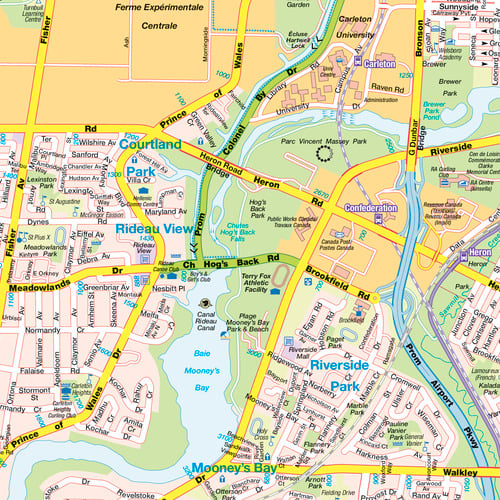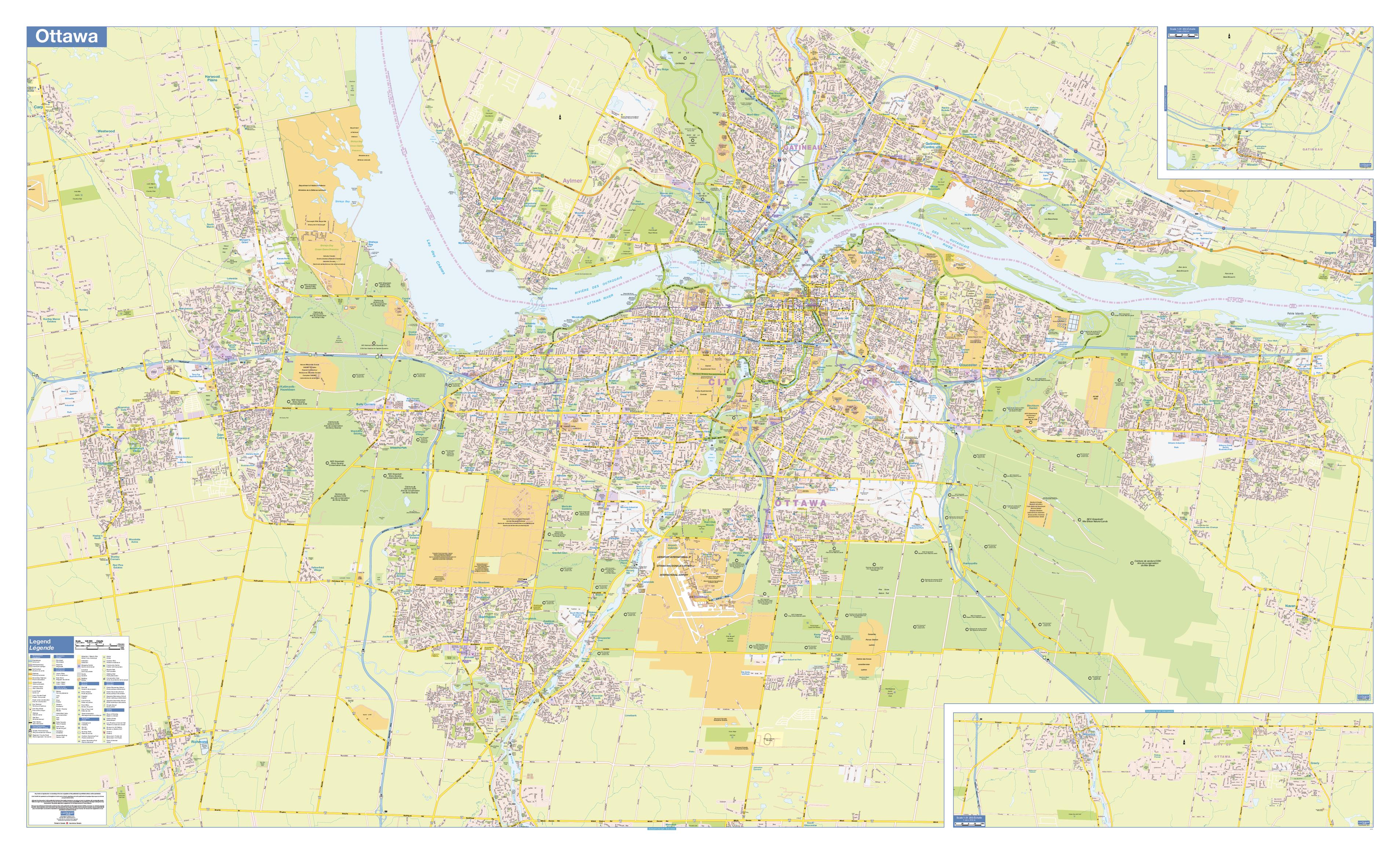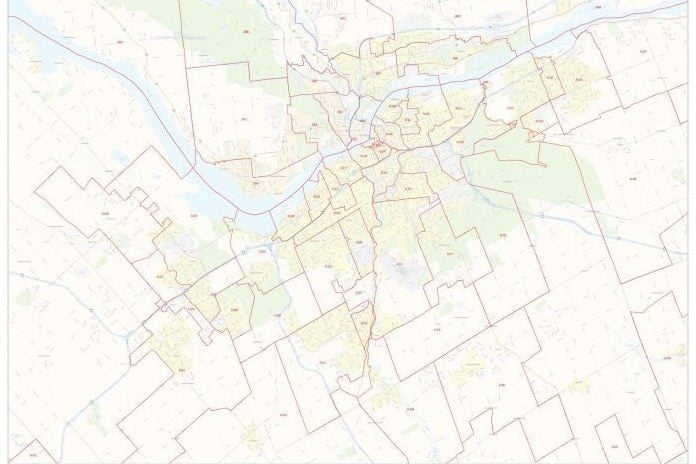Ottawa’s History
Ottawa’s history was shaped by a series of events that took place during that time. For instance, the Rideau Canal, the lumber industry, the choice of Ottawa as the location of Canada’s capital, and American and European influences and interactions, contributed to structure present-day Ottawa.
Draining of the Champlain Sea about ten thousand years ago was the reason behind Ottawa Valley becoming habitable. Local population deployed the area for wild edible harvesting, hunting, fishing, trade, travel, and camps for over 6500 years. The river valley also had several archaeological sites with arrowheads, pottery, and stone tools. Three major rivers meet within Ottawa and make it an important trade and travel area.
View this mesmerizing city and its surrounding places through our Ottawa, Ontario Maps.
Origination
The name of the city originated from the Ottawa River which was derived from the Algonquin Odawa, which means ‘to trade’. The word refers to the indigenous people who used the river to trade, hunt, fish, camp, harvest plants, ceremonies, and other traditional uses.
Ottawa is the capital city of Canada. It stands on the south bank of the Ottawa River in the eastern portion of southern Ontario. Ottawa borders Gatineau, Quebec; the two form the core of the Ottawa – Gatineau census metropolitan area and the National Capital Region.
About Ottawa & Its Geography
Ottawa was founded in 1826 as Bytown, and incorporated as Ottawa in 1855. By this time, the city gradually evolved into the political center of Canada. Its original boundaries were expanded through numerous invasions and were ultimately taken over by a new city incorporation in 2001; therefore increasing its land area.
The older part of the city is known as Lower Town and occupies an area between the canal and the rivers. Across the canal to the west lies Centretown and Downtown Ottawa, which is the city’s financial and commercial hub and home to Parliament of Canada and numerous federal government department headquarters. Being located within the major, yet mostly dormant Western Quebec Seismic Zone, the city is often struck by earthquakes. Ottawa sits at the confluence of three major rivers: the Ottawa River, the Gatineau River and the Rideau River of which the former two rivers were considered of great historical importance in logging and lumber industries.
Economy
Ottawa is known to have a high standard of living with low unemployment. The city has the fourth highest GDP growth rate among major Canadian cities. In 2007, GDP of a Canadian average exceeded from 2.4% to 2.7%. The average gross income in the Ottawa-Gatineau region amounted to $40,078 which was a 4.9% increase as compared to the previous year. When it comes to the cost of living, the rate grew to 1.9% annually.
Ottawa is also ranked the second cleanest city in Canada, and third cleanest city in the world. In addition to the economic activities that come with being the national capital, Ottawa is a primary technology center. City’s 1800 companies employed approximately 63,400 people in the year 2015. The concentration of companies in this industry earned the city the nickname of ‘Silicon Valley North’. Majorly, the companies specialize in telecommunications, software development, and environmental technology. Ottawa’s health sector is also a major employer that engages over 18,000 people. Besides, other occupations like, business, finance, administration, and sales and service rank high in the city’s employment generation.
Culture
Ottawa culture mainly sees a lot of French influence and a fair history of immigration adding to its multicultural identity, especially in the culinary culture of the city, which varies from French cuisine to Lebanese and everything in between.
Ottawa visitors get to see plenty of cultural venues ranging from several art galleries such as the one at Carlton University, the Karsh-Masson Gallery and the National Gallery of Canada. The City Hall is also counted as an impressive art selection that is open for public visit. Of the many museums, a few of them worth visiting are the Museum of Contemporary Photography, the Aviation Museum, the Royal Canadian Mint and the Bank of Canada Currency Museum.
Festivals
Ottawa, being the administrative capital of Canada celebrates country’s biggest annual festivals and is often termed as Canada’s Festival Capital. The contemporary culture of the capital city is seen every year in multitudes of festivals. The Canadian Tulip Festival is the most famous spring festival. The summers in Ottawa witness numerous festivals including the Ottawa Bluesfest, the Ottawa Dragon Boat Festival and the Canada Day celebrations which is a celebration of all things Canada in its national capital and is a must-visit for travelers. With the dawn of beautiful autumn season, a host of various fall festivals are noticed and winter season sees the winter festival ‘Winterlude’.
Demographics
The population of Ottawa city in 2011 was 883,391, which was an 8.8% increase from 2006. The population of the census metropolitan area, used by Canada’s federal government to conduct the country’s five-yearly census was 1,215,735.
Languages
The city of Ottawa offers municipal services in both Canada’s official languages, i.e, Canadian English and Canadian French. Approximately 300,000 people, or 37% of Ottawa’s population, can speak both languages through the city is not officially bilingual in law.
Click on the Ottawa maps below to buy:


